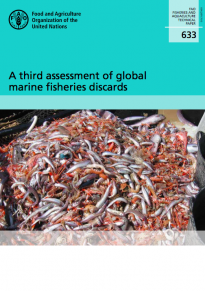Supportive Policy Environment for Discards and Bycatch
The range of policy options to reduce discards is determined both by the biological characteristics of the fishery and the socio-economic environment. Best practices in bycatch reduction are illustrated by a number of countries in the Organization for Economic Cooperation and Development (OECD), while many countries especially in Asia provide valuable experiences in utilization of bycatch. Increased bycatch utilization is now widespread in Asia, Africa and America leading to reduced discards.
In the mid 1990s, it was reported that there has been a global trend towards a reduction in discards through the use of more selective fishing gears, introduction of bycatch and discard regulations, and improved enforcement of regulatory measures. The increased retention of bycatch for human or animal food has been triggered by improved processing technologies and expanding market opportunities for lower value catch.
The International Guidelines on Bycatch Management and Reduction of Discards document was endorsed by the Committee on Fisheries (COFI) in 2011 and is designed to assist States and regional fisheries management organizations and arrangements (RFMO/As) in implementing the ecosystem approach to fisheries. These guidelines are voluntary and constitute an instrument of reference to help States and RFMO/As in formulating and implementing appropriate measures for the management of bycatch and reduction of discards in all fisheries and regions of the world.
Nations in the north temperate zones have evolved fishery policies designed to reduce bycatch discards. In many African countries, however, government policies have concentrated on the development of market opportunities for bycatch species. In Mozambique, for example, there have been efforts to dry and salt fish.
Policies have also contributed to the development and use of six to seven-meter vessels with small inboards that transfer bycatch from at-sea vessels to shore side markets. This transfer permits retention and use of bycatch that formerly had been discarded.
Key Publications
International Guidelines on Bycatch Management and Reduction of Discards The Food and Agriculture Organization, in collaboration with member states have developed international guidelines to aid in implementing appropriate measures in regards to the management of bycatch and the reduction of discards in fisheries. | |
A global assessment of bycatch and discards Estimates of global fish discarded, as well as techniques to reduce bycatch levels, including traditional net selectivity, fishing gear development and time/area restrictions, are discussed. | |
A Third Assessment of Global Marine Fisheries Discards Included is publicly available discard data in the last 20 years to establish a baseline of a time series of global marine fisheries discards, which is essential for monitoring the status of discard management. |
More Resources
More Resources
31 October 2023
01 October 2023














